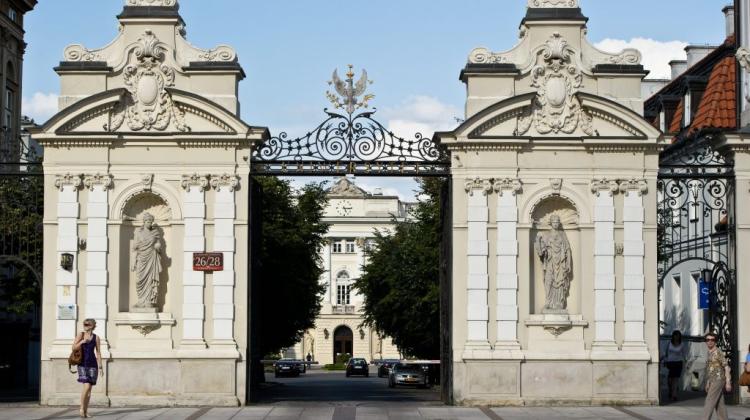Germanic people in the cave
 Gold pendant with south-eastern European references, found in recent years in the cave by treasure hunters. Photo by M. Rudnicki
Gold pendant with south-eastern European references, found in recent years in the cave by treasure hunters. Photo by M. Rudnicki
Traces of Germanic people from the turn of the fourth and fifth century AD in the cave Wisielucha in the Kraków-Częstochowa Upland have been discovered during excavations by archaeologists from the Institute of Archaeology, University of Warsaw.
People probably lived in a rock shelter in connection with the military threat from the Huns.
"This year\'s survey provided data that indicate that the interior of the cave had been used for a long time - told PAP Marcin Rudnicki, head of excavations. - We found the remains of wooden structures and fragments of pottery from the Migration Period."
In that period, the Asian Huns began to pressure on eastern Europe, which resulted in migration of other communities to the west. The consequence was the fall of the Roman Empire.
Post-consumption animal remains also attest to the long-term occupation of the cave. Although, as the explorers reserve, contradictory to the residential function space are human bones and the treasures accidentally discovered in previous years, which consisted of Roman coins, silver clasps, silver and gold pendants. Also this year, scientists discovered valuables in the form of two fibulas made of bronze brooch and pendants and beads of glass and amber.
"Discovered human bones may indicate that the cave had a sacral function - a place of sacrifice, which consisted of food, everyday objects, but also valuables, coins and people" - said Rudnicki. The archaeologist also noted that there was another possibility of interpretation of the discoveries: the cave could be used for shelter in dangerous times. Protection the place was supposed to provide proved to be ineffective, and the human remains and hidden items could be evidence of dramatic events that took place 1500 years ago. This is supported by the presence of a layer of burning - trace of the fire that ended the use of the cave during the Migration Period.
Among the objects found by archaeologists are those that, in their opinion, are similar to those discovered in areas of central and southern Ukraine, then inhabited by the Goths - one of the Germanic tribes. However, at this point scientists are not able to determine whether the cave was inhabited by the Goth refugees retreating from the Huns, or only by the local East-Germanic community.
Archaeologists draw attention to the unique nature of the discoveries. "The damp, oxygen-free atmosphere preserved relics such as remains of wood, burning layer, which under normal circumstances would not have a chance to survive to the present day" - says Rudnicki.
The research work of the Institute of Archaeology, University of Warsaw led by Marcin Rudnicki, conducted in August, was also attended by archaeologist Dr. Andrzej Maciałowicz and students from the Institute of Archaeology, University of Warsaw. The excavations are part of a five-year research project "Migration Period Peoples in the Oder and Vistula basin", funded by the National Science Centre. Its aim is a comprehensive examination of the phenomena occurring between the end of the fourth and the beginning of the seventh century in the Oder and Vistula basin.
PAP - Science and Scholarship in Poland
szz/ agt/
tr. RL
Przed dodaniem komentarza prosimy o zapoznanie z Regulaminem forum serwisu Nauka w Polsce.


















